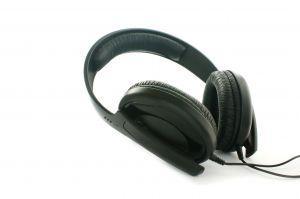 The constant improvements in the quality of audio and video force the filmmakers to be more aware of the technical details, to be able to offer quality products to increasingly demanding users.
The constant improvements in the quality of audio and video force the filmmakers to be more aware of the technical details, to be able to offer quality products to increasingly demanding users.
By Alejandra García Vélez
High definition television, 3D images, interactive programs, are some of the trends that today take the world of audiovisual production; however, another fundamental component of a quality project should not be forgotten: sound.
Although developments in this field are not as well known, popular or promoted as the technologies mentioned above, they are also part of the new offer existing in the market, so it is a necessity for industry players to know in depth the alternatives they can get to count on.
Precisely, during the last edition of TecnoTelevisión, the regional director for Latin America of Dolby Laboratories, Mr. Carlos Watanabe, explained in detail the different audio formats in use today.
A format for every occasion
In fact, one of the topics addressed by the expert during his talk was the difference in audio formats according to the Digital Terrestrial Television standard used. There are currently three formats for 5.1 audio available, which have been adopted by the different standards.
AC3 (Dolby Digital) is used in countries with the ATSC standard and by many DVB installations around the world. The E-AC3 (Dolby Digital Plus), is a new format that has also been selected by many of the installations under the DVB format. While the HE-AAC is the format used by some countries in Europe, such as Sweden and the United Kingdom that operate under the ISDB-T technology.
In the case of Latin America, the audio formats used are directly related to the DTT standard selected by each country. For example, in Colombia, in August 2008, the National Television Commission decided to adopt the DVB-T format as the standard for DTT with AC3 as the audio format for 5.1 audio transmissions.
But, after the announcement made on November 23 by the government of the coffee country, of a change in the standard, to move to DVB-T2, the expert points out that, an opportunity opens up to also update the selected audio format. For example, the E-AC3, or Dolby Digital Plus, which was developed by Dolby for the next generation of HD streaming services.
When talking about Dolby Digital Plus, Watanabe assures that it includes several improvements; among them, a more efficient encoding algorithm, which allows a lower bit-rate while maintaining a high quality in the transmission, as well as 100% compatibility with AC3 and Dolby metadata.
It also offers the possibility of audio description 5.1, a service that describes the images on the screen which can be used by blind people. Finally, another of its great advantages is that an additional license fee is not necessary.
Volume matters
The topic of "loudness" was also addressed during this expert's lecture. Loudness can be defined as an amount of perception, as the magnitude of the physiological effect produced when a sound stimulates the ear. "This is an attempt to quantify the subjective perception of how loud a sound is, so it's not surprising that people perceive that intensity differently," Watanabe explains.
But what is the importance of this concept? First of all, if you have programs with different levels of loudness within a particular channel, for example commercial intervals, or channels with different values between them, the consumer will have a bad audio experience, being forced to adjust the volume whenever there is a difference in loudness. In fact, says the expert, both in open and pay television it is reported that this factor is the main complaint regarding the audio received from consumers.
This problem is not easy to solve, although many countries have already passed strict regulations to protect consumers. Similarly, the industry is making an effort to self-regulate, proof of this are the practices recommended in the standard A / 85 of the American Committee for Advanced Television Systems (ATSC) or in the European case with the EBU R-128 standard.
In that sense, Watanabe points out that one of the strategies to achieve a consistent sound experience is based on the correct use of the audio metadata that is present in the bitstreams with the AC3 and E-AC3 standards.
Audio also counts
"Audio issues are not usually a priority for most TV stations. This is despite the fact that customer surveys show that audio accounts for at least 50% of the viewer experience, and poor sound can jeopardize the joy of watching TV," says Watanabe.
Therefore, it also makes an invitation to evaluate the quality of the audio that is being offered in Latin America and to analyze how it can be improved in this aspect to present the user with a better offer.
In addition, it highlights that digital audio allows a much higher audio quality than that offered by digital television, without distortion and with a much higher dynamic range. These improvements in turn become threats to filmmakers, as poor audio will be much more evident in a digital environment.
"We have found that a growing number of television companies and other professionals in the sector, who after achieving the stabilization of video problems are increasingly interested in audio. Precisely, Dolby is involved with several market leaders throughout Latin America to help improve their audio handling," said the official.
Finally, the speaker expressed that his objective during the talk presented at the last edition of TecnoTelevisión was to share the best practices in digital audio, as well as to make professionals more aware that in the digital environment more attention should be paid to audio.

























Leave your comment